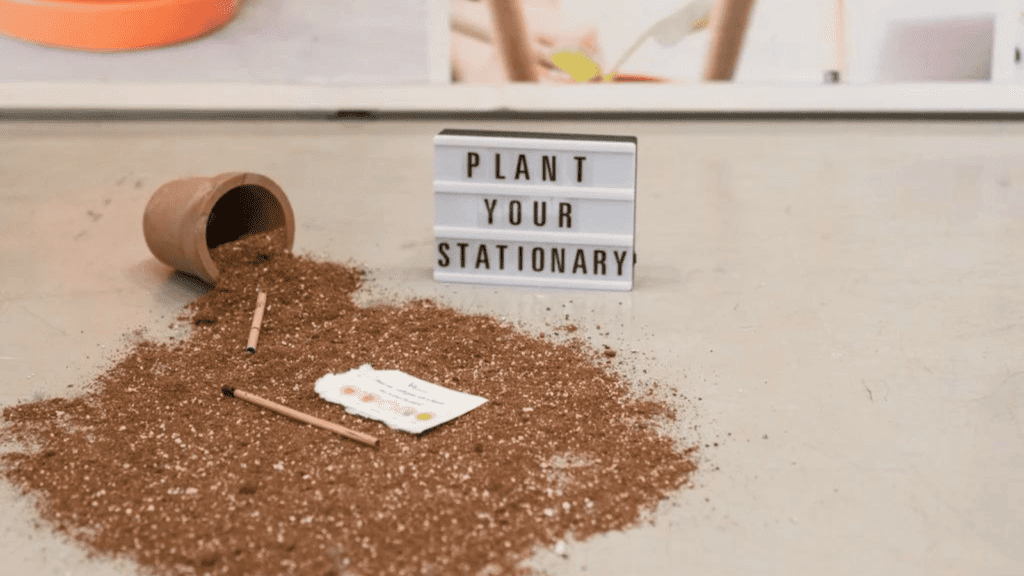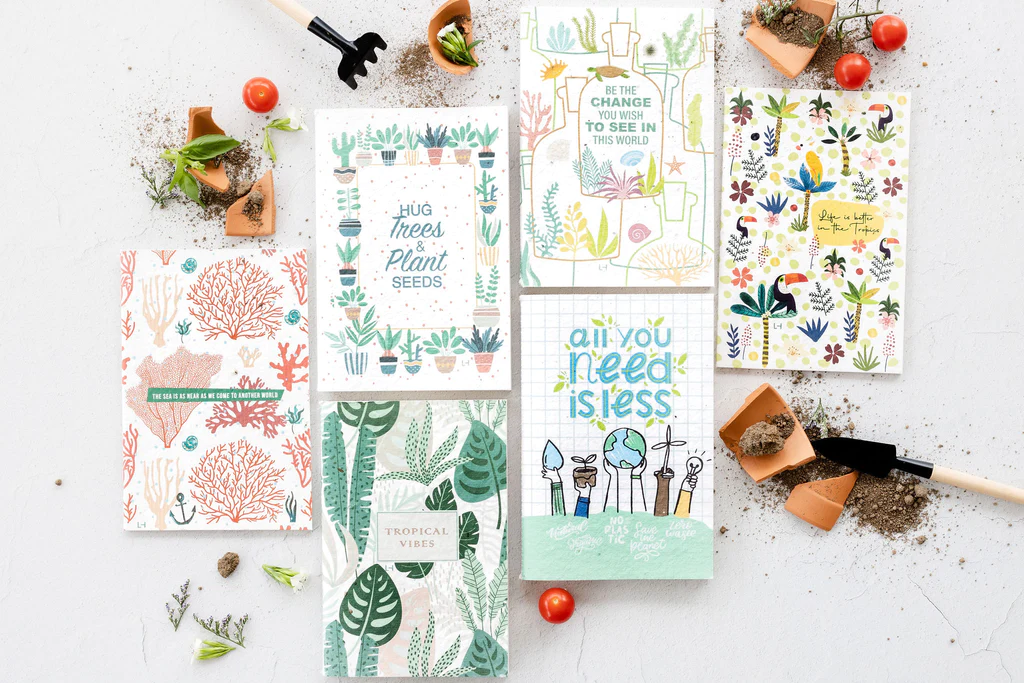Have you heard of our ‘BĪJ’ collections? They’re not just any stationery, they can actually be planted when you’re done with them!
Everyone is talking about the environmental impact of fashion, food, and of course fossil fuels, but have you ever considered how stationery could contribute to waste and climate change? Paper, pens, and pencils might seem small but they can quickly add up! For example, in 2018, a staggering 422 million metric tons of paper was consumed globally. And to create one ton of conventional office paper, 24 trees are needed. That is 10 BILLION trees in a year. Paper isn’t even the worst offender, with most stationery being created from unsustainable sources such as plastics, which end up in landfills. Read on about the problems with current stationery and how we can combat them.
RELEVANT SUSTAINABLE GOALS



Why your current stationery is not planet friendly
1. Pens
Sure, they’re small and unassuming but don’t be fooled, pens, which are made mostly of plastics, can be as hazardous as plastic bags and straws. The casings are more often than not made of a toxic plastic called Polystyrene, which has the chemical Styrene, which is considered one of the 100 most hazardous chemicals. YIKES! Not only is it difficult to recycle (or sometimes impossible!), the size of the pens means that they are easily lost, ending up in the sea. The toxins contaminate the water, poisoning the aquatic life, and ultimately – us. The ink is also often made of chemicals that can be toxic to the environment. When disposed of in landfills, they can easily leak into the soil or groundwater, polluting it.
2. Pencils
You might think that pencils are a lot better than pens, and you are right, but they still aren’t completely eco-friendly. First, most pencils are made from woods such as cedar and thus are contributing to deforestation. The rubber used in erasers also comes from a renewable source, trees, but it needs to be reforested to be truly sustainable. Unfortunately, the graphite used in pens isn’t great news. More often than not graphite is extracted via open-pit mining, which can cause everything from habitat loss to landslides, to acid drainage into the soil and waterways, killing wildlife and polluting our earth. There are artificial granite options, which reduces mining but it is still made from crude oil by-products that are mixed with clay and other chemicals, so it’s still not the best alternative.
3. Notebooks
As mentioned above, the amount of paper used is substantial, and that is not even counting the ones that are in notebooks. There is of course the concern of deforestation, but it is also important to think about the carbon footprint. A 100-page notebook releases 10 pounds of carbon dioxide to produce and dispose of, according to the Environmental Paper Network. Moreover, it’s not just the paper inside, but the covering outside. A popular notebook company (which rhymes with bowl fin) is FSC certified but their covers are made from synthetic materials. Their hardcovers are made of polypropylene, while the soft covers are made of polyurethane – both materials that are not recyclable Plus, it isn’t even clear if their paper is post-consumer (recycled) paper.
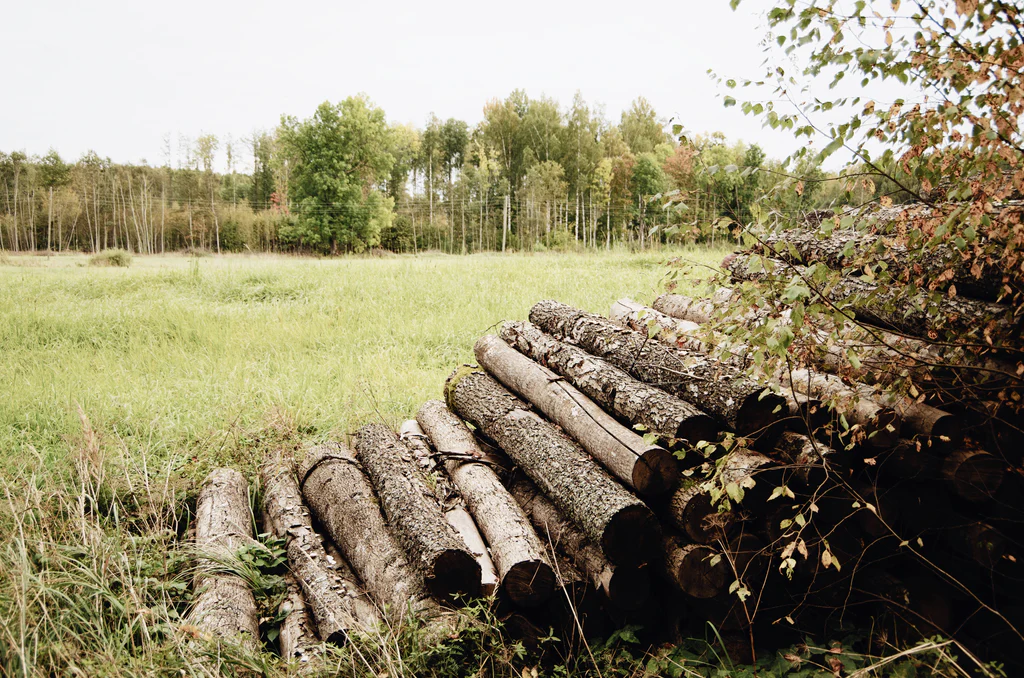
What is environmentally friendly stationery?
While there is no official definition of environmentally friendly stationery, it can refer to a variety of materials and processes used in the creation and application of the product. For example, pens that use water-based non-toxic natural inks are much better than their alternative. Some companies have even started to use vegetable dyes to create crayons and colour pencils. Eco stationery can also refer to items made from recycled materials, such as notebooks made from 100% post-consumer waste recycled paper or highlighter pens made from recycled plastic. Look for labels such as FSC or B2P when shopping. Equally, stationery that is recyclable and biodegradable can be considered eco-friendly. Sharpeners made of wood instead of plastic or pencils made of paper are one way to ensure that these items don’t end up contributing to our ever-growing landfills. Green stationery could also refer to using materials from reforested trees, i.e. companies replant and replace the trees they have used in creating the products. Plantable stationery, like ours, is both biodegradable and creates new life. Finally, zero-waste stationery is a combination of the above!
For us at Left-handesign, eco-friendly stationery refers not just to our zero-waste products, that aim to solve the problems of plastic stationery filling up landfills, it also means putting nature back into people’s lives. Our ‘BĪJ’ collections, when coming to the end of their life, can give new life by planting them – teaching kids and adults alike about the power of nature. We also believe in the 5R’s – the Refuse, Reduce, Reuse, Repurpose, Recycle methodology to fight waste and global warming.
How can I be more sustainable?
So where do you even start? It can be so daunting to look at our environmental impact with something so small yet so prevalent as stationery. So here are our recommendations.
1. Make the best of what you have at home
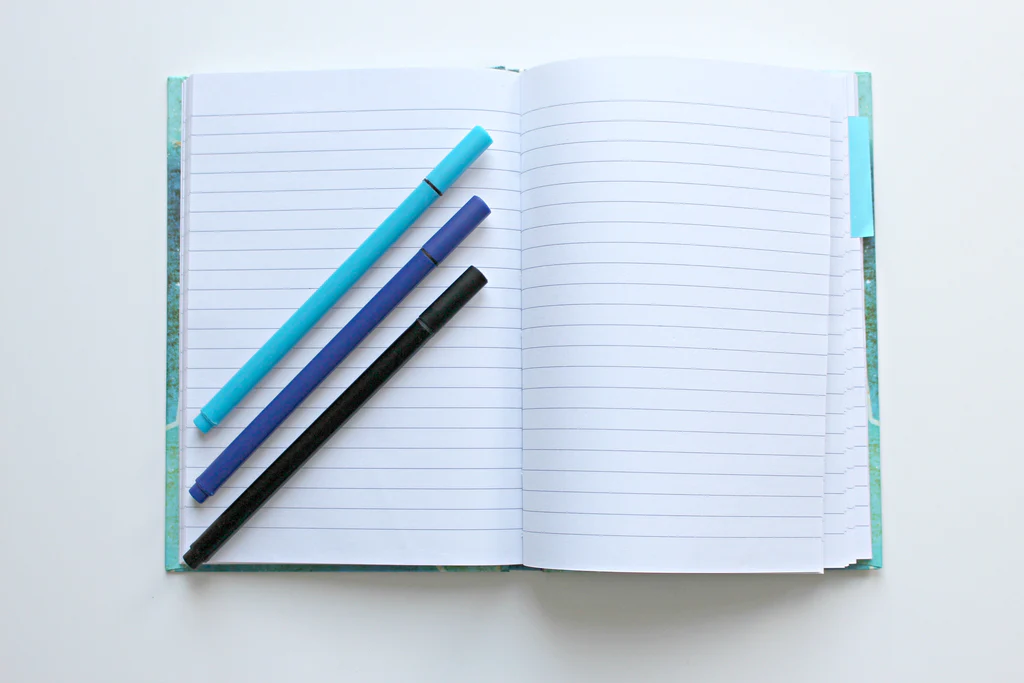
The first place you can go “shopping” for stationery is your own home and office. Scrounge up your stray pens and neglected notebooks. The ones that have fallen off your shelf or ended up in a random drawer. More than likely, they have some life still left in them. A few pages that you can rip out to make notes, or maybe even buy refills for the pens that have run out of ink. This also means using both sides of the paper. Keep letters, documents etc that have only one side printed, and use them as scrap, note-taking or test printing.
If you have too much stationery or are needing to clear out space, don’t just throw away old pens, pencils etc. Paper, in particular, can be used for a number of things such as arts and crafts, gift wrapping or other DIY projects. You can also donate things such as pens, pencils and erasers to charities and schools that would be able to make better use of them. Other stationery like textbooks and calculators can be easily resold. Similarly, if you are shopping, you can look for second-hand stationery, either at thrift stores or even on online platforms. Specifically for students, this is a great way to save time AND the environment.
2. Next, learn how to recycle your stationery properly
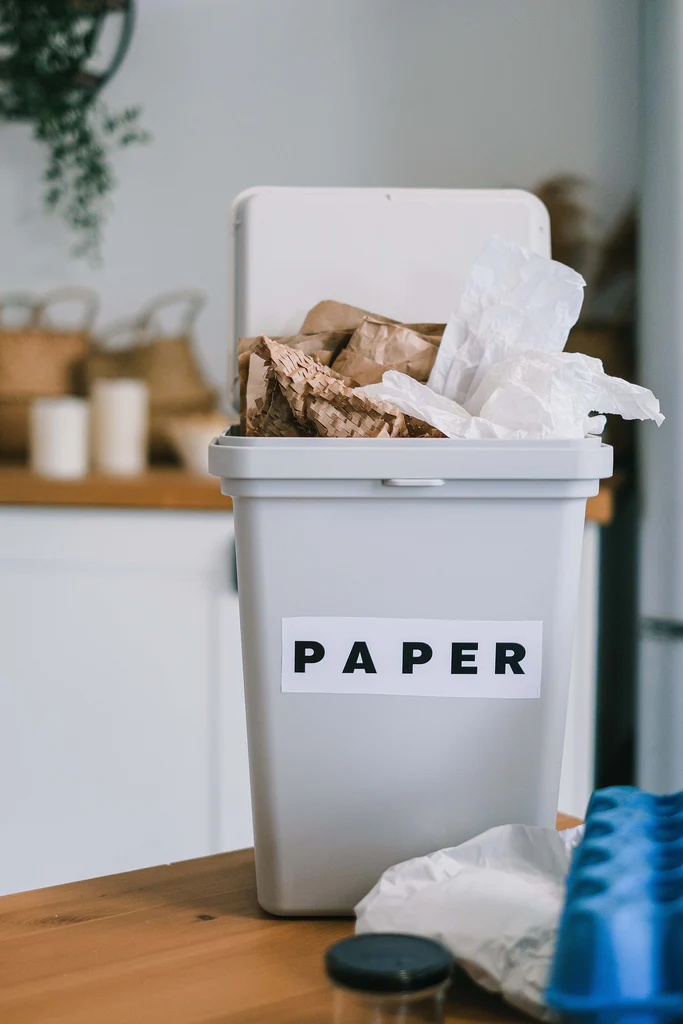
Paper is perhaps the easiest to recycle. You can use it in compost, as long as your paper scrunches, you can tear it up into small pieces and place it in the soil and your plant will soak up all the nutrients and moisture. It is also quite straightforward to remove any additional bits and bobs such as staples, glue or plastic covers from your notebooks or papers and recycle the paper.
Pens and pencils are a little harder as they have several different components, primarily of plastic, but you still can try and salvage it. You can find organizations that can help recycle and reuse pens. For example, in Singapore, you can donate to Save That Pen, a charity that collects donated pens, refills them, and passes them on to underprivileged students in Singapore and the region. Where possible, pens that are deemed unusable are stripped of their plastic and metal to be recycled. Plus, pens that are seen as unusable are stripped of their plastic and metal to be recycled. More globally, there is Terracycle, an organization that works to recycle hard-to-recycle products such as pens and other stationery.
3. Finally, shop sustainable stationery
Left-handesign is Singapore’s first plantable stationery company, that provides you with a zero-waste option to replace the current stationery which is adding to our landfills. The products include pens, pencils and notebooks and a lot more! The notebooks are made of seeding paper, – it can be put straight into the soil once used and it becomes a plant! The inside pages are handmaderecycled paper for writing. When you are finished using your pens and pencils, the full product can be planted. Start growing your own garden with Tomato, Morning Glory, Okra, Spinach, Mustard Seeds, Onion, Fenugreek and Eggplant! Other products such as BĪJ gift tags and greeting cards are not just plantable but are also printed with water-soluble eco-friendly inks. So check out our ‘BĪJ’ collections and start your sustainable stationery journey now!
You may also be interested in :
10 Inspiring Social Justice And Activism To Follow On Instagram


